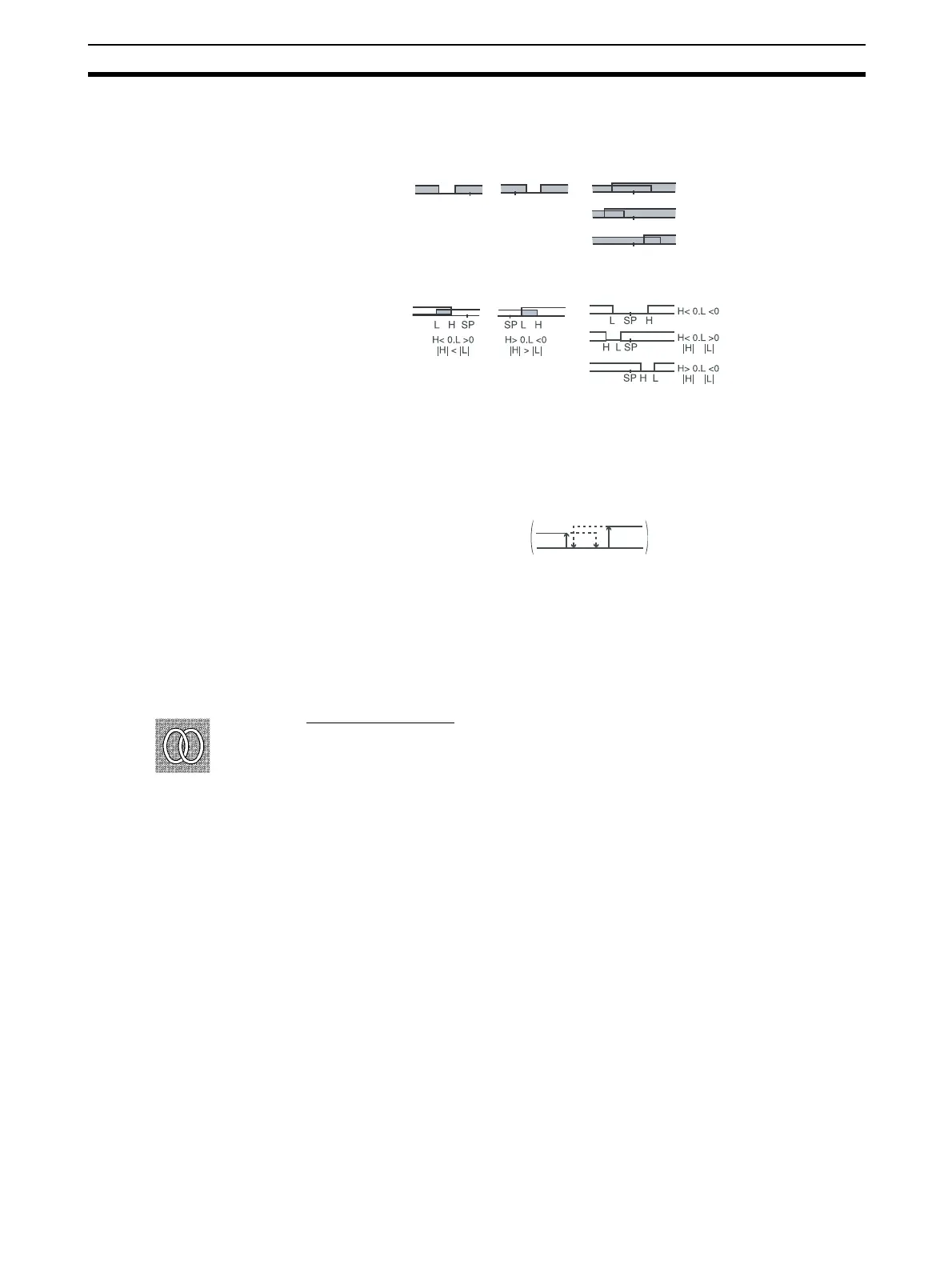103
Initial Setting Level Section 5-5
Note (1) With set values 1, 4 and 5, the upper- and lower-limit values can be set
independently for each alarm point, and are expressed as “L” and “H”.
(2) Set value 1: Upper- and lower-limit alarms
(3) Set value 4: Upper- and lower-limit range alarm
(4) Set value 5: Upper- and lower-limit alarms with standby sequence
• The upper- and lower-limit alarms described above.
• In cases 1 and 2, if there is significant overlap between the upper- and
lower-limit values after hysteresis, the alarm will always be OFF.
Examples of case 1 and 2 : In case 3, under general conditions, the
alarm is turned OFF.
(5) Set value 5: Upper- and lower-limit alarms with standby sequence
If there is significant overlap between the upper- and lower-limit values af-
ter hysteresis, the alarm will always be OFF.
Note • Alarm types are set independently for each alarm in the “alarm 1 type”,
“alarm 2 type” and “alarm 3 type” parameters (initial setting level).
Defaults is “2: Upper- limit alarm”.
■ Related parameters
“Alarm value 2, 3” (operation level)
“Alarm value upper limit 2, 3” “Alarm value lower limit 2, 3” (operation level)
“Standby sequence reset” “Alarm 2, 3 open in alarm” “Alarm 2, 3 hysteresis”
“Alarm 2, 3 latch” (advanced function setting level)
Case 1 Case 2
Case 3 (ON in regular situations)
H< 0.L <0
H< 0.L >0
H≥L
H> 0.L <0
H≤L
H<L
H> 0.L <0
H>L
H
H
H
H
H
L
L
SP
SP
LSP
L
SP
SP
L
H< 0.L <0
Case 2Case 1 Case 3 (OFF in regular situations)
≤
≥
See
